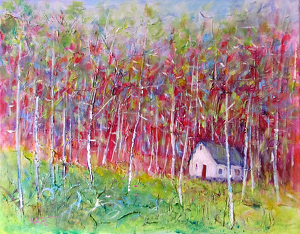 A place called home…
A place called home…
Developing and maintaining a relationship to Buddhism, Dhamma, or meditation, as a modern person in the modern world, is not straight-forward. Yet many of us are drawn to this. There is something about seeing things the way the Buddha saw them, that speaks to modern people. It has for 2,500 years.
Buddhism? Dhamma? Meditation?
Each generation has its own challenges, unique to itself, yet common to humanity. Part of what’s common is what the Buddha pointed to. Life can be troublesome, disappointing, and difficult to navigate. Yet happiness seems possible though unpredictable. The answers don’t seem to be “out there”. They’re “in here”. Part of what’s unique is the context; living in Australia; being here now; with the hopes, dreams, and limitations we all experience.
So how to find a way of being with Buddhism-Dhamma-Meditation that works ….that really works?! We’re offered extremes. Meditate a lot; go on long retreats; withdraw from the world; confront my mind. It’s great when we can do this, but it can be a chasm to confront when we return to normal life. Or we’re encouraged to “just do it” … in everyday life; be present; be mindful; live the dream!! But why doesn’t it seem to work? It’s all start-stop; start-stop; start-stop. I can get going, but I can’t sustain it!
Handles …
So how to get a rhythm that strikes a balance between these extremes? What can we hang onto as modern people? What conditions are useful?
- Knowledge: We need to understand how the Buddha saw things; how he understood the world; what he thought we need to understand. In this way we understand the problem he was trying to solve, and the solution he pointed to. To have Buddhist sensibilities, or Dhamma sensibilities, we need to have this basic knowledge. Otherwise we’re in the dark.
- Experience: We need to understand our minds via our own direct experience. It’s not enough to know about our minds. Buddhism is not primarily a study course. It’s a challenge to be with our experience, to notice what we see, to not run away from ourselves, and to look for patterns. It’s not always easy, but the fruits are worth it. Confidence comes from this place.
- Life: We need to experience Dhamma in our everyday lives. It’s not enough to just sit and watch our minds. We need the Dhamma to surround us and to register it’s surrounding us, if we’re to sustain our interest and joy. The complex aspects of our lives needn’t overwhelm us. Because there already exists a lot of necessary simplicity in our lives. It just rarely gets our focus. Every day we engage in many simple routines, eating being one of them, and these myriad habits are potentially our great friends.
- Integration: Time is a factor. We need to see the same things many times. This is how we get to know ourselves. We see patterns in our reactions, our behaviour, our stances in life, and we get sick of doing things the same way, particularly when they take us back to a dark place. This may take days, weeks, months, or years. When we act more skillfully as a result, we participate in wisdom. We become more realistic. But we also become more hopeful.
Doing it in a Tribe
Most people find it hard to do this on their own. It was never the Buddha’s intent. He pointed to a shared journey.
So what would this mean for a modern person? It’s a work in progress, but most people appreciate….
- Having a shared place …. to learn, understand and experience the Dhamma together
- An opportunity to “make sense” …. to talk with others about my progress and confusion
- An environment of emotional safety … a place where it’s OK to feel inadequate or to “not know”
- A spirit of friendship …. where we come to notice and appreciate each other’s journey
- A call to commitment … a call to keep going, and an environment that facilitates this
All of this supports an experience of coming home; to resting in a place that feels like home. A place where we feel comfortable to be ourselves; to be with ourselves; to support others; and to allow them to support us … and doing this within a context of Buddhism, Dhamma, and meditation, as modern people in a modern world.
Danny Taylor is a teacher and committee member at BMIMC. He is interested in creating conditions to allow modern people to experience the dharma, practice the dharma, and develop their own rhythm, as participants in life.
